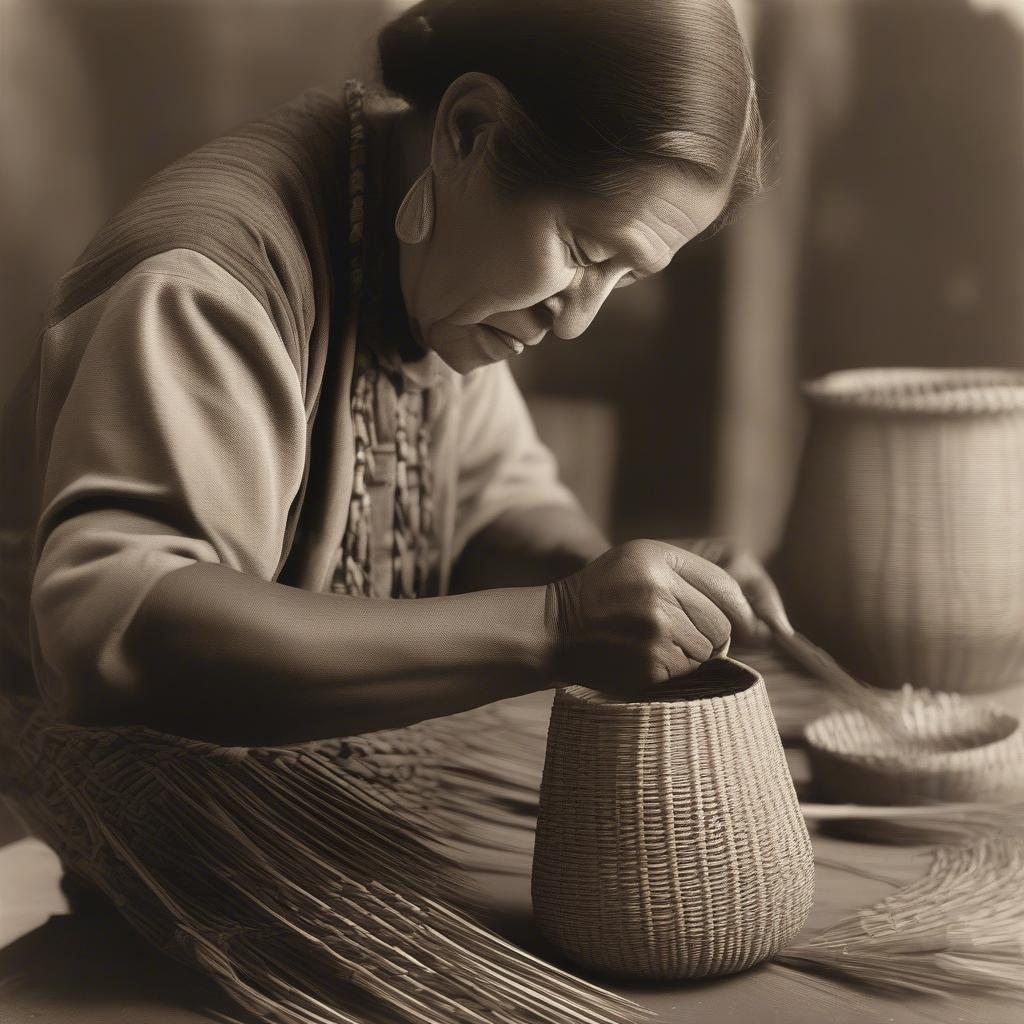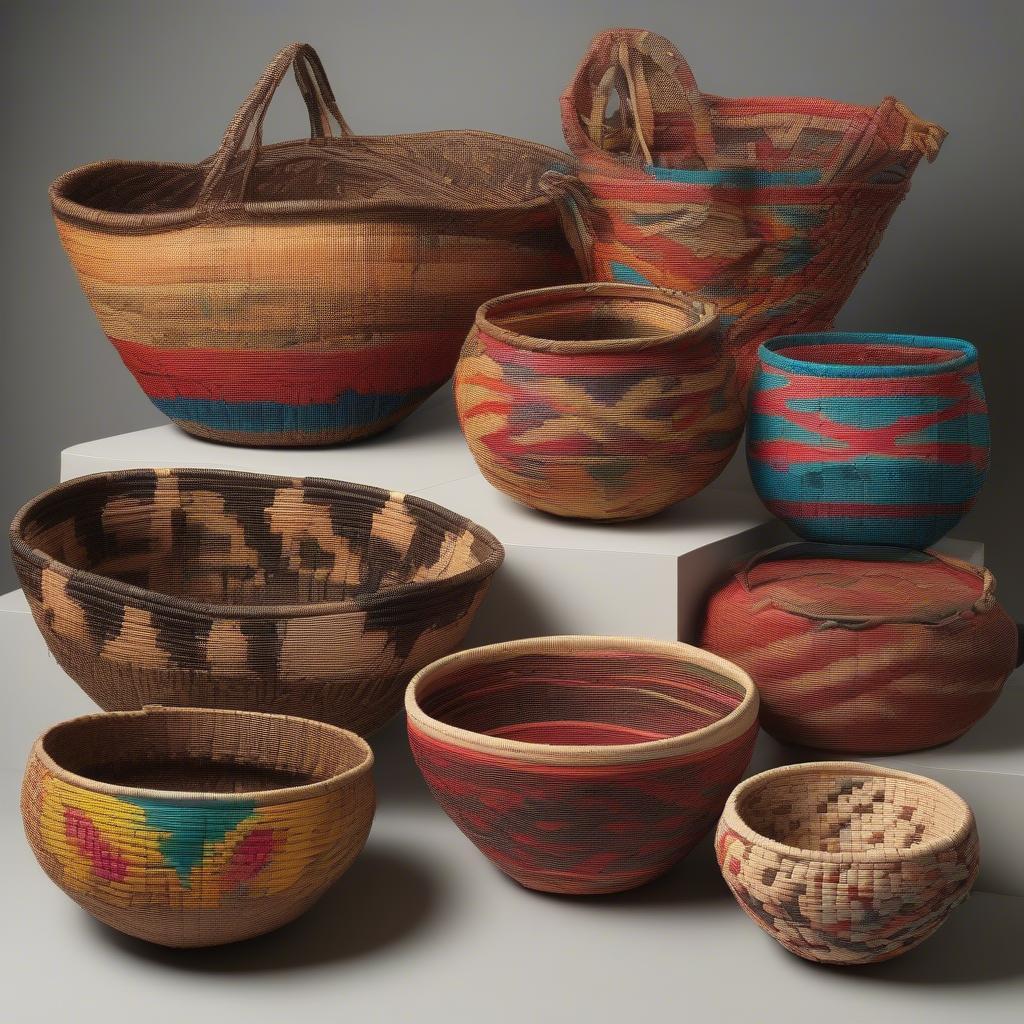Basket Weaving
Exploring the Art of Choctaw Basket Weaving
Choctaw Basket Weaving is a rich tradition deeply intertwined with the history and culture of the Choctaw people. These intricate baskets are more than just functional objects; they are works of art that tell stories and connect generations. This article delves into the world of Choctaw basket weaving, exploring its history, techniques, and cultural significance.
A Legacy Woven in Time: The History of Choctaw Basket Weaving
For centuries, Choctaw basket weaving has been a vital part of their daily lives. Baskets served practical purposes, used for gathering food, storing goods, and even as cradles for infants. Over time, these utilitarian objects evolved, incorporating intricate designs and vibrant colors, transforming them into cherished expressions of artistry.
Choctaw baskets are primarily made from natural materials found in their ancestral homelands. River cane, a tall, reed-like grass, is the most common material, carefully harvested and prepared before weaving. The Choctaw also utilize other natural fibers like pine needles and honeysuckle, each adding a unique texture and character to the finished product. pine needle basket weaving offer a different aesthetic and feel.
The Intricate Dance of Choctaw Basketry Techniques
The techniques employed in Choctaw basket weaving are as diverse as the baskets themselves. From the simple plaiting technique used for everyday baskets to the complex double-weave method that creates stunning patterns, each technique requires skill and patience. Dyeing the cane with natural pigments extracted from plants and berries adds another layer of artistry, creating vibrant hues that enhance the intricate designs.
What materials are traditionally used in Choctaw basket weaving?
Traditionally, river cane, pine needles, and honeysuckle are the primary materials used in Choctaw basket weaving. These natural materials provide strength, flexibility, and unique textures, allowing for the creation of diverse basket styles.
How long does it take to weave a Choctaw basket?
The time required to weave a Choctaw basket varies greatly depending on its size, complexity, and the weaver’s experience. A small, simple basket might take a few days, while a larger, more intricate piece can take weeks or even months to complete.
 Choctaw Basket Weaver at Work
Choctaw Basket Weaver at Work
Choctaw Baskets: More Than Meets the Eye
Beyond their practical uses, Choctaw baskets hold deep cultural significance. They are a tangible link to the past, preserving ancestral knowledge and traditions passed down through generations. The intricate designs woven into each basket often tell stories, depicting important aspects of Choctaw culture, history, and beliefs.
“Choctaw baskets are not just beautiful objects,” says renowned Choctaw artist, Anya Biloxi. “They are living embodiments of our heritage, woven with the stories of our ancestors and the spirit of our people.”
Preserving the Art: The Future of Choctaw Basket Weaving
Today, Choctaw basket weaving continues to thrive, thanks to the dedication of artisans who are committed to preserving this important tradition. Workshops and classes are offered, teaching the next generation the intricate techniques and cultural significance of this unique art form.
“Teaching the younger generation is vital,” says renowned Choctaw basket weaver, Talakoa Isho. “It’s about keeping our culture alive, ensuring that these stories continue to be told through the weave of our baskets.”  Contemporary Choctaw Baskets
Contemporary Choctaw Baskets
Conclusion
Choctaw basket weaving is a testament to the enduring artistry and resilience of the Choctaw people. From its practical origins to its contemporary interpretations, this ancient craft continues to connect generations, preserving cultural heritage and telling stories through the intricate weave of river cane and other natural materials. By supporting Choctaw artisans and appreciating the cultural significance of their work, we can help ensure that this beautiful art form continues to flourish for generations to come.
FAQ
-
What is the significance of Choctaw basket weaving? Choctaw basket weaving represents a vital cultural tradition, serving as a tangible link to their history and ancestral knowledge.
-
What materials are used in Choctaw basket weaving? Primarily river cane, pine needles, and honeysuckle are used, though other natural materials may also be incorporated.
-
Are Choctaw baskets still made today? Yes, Choctaw basket weaving continues to thrive, with contemporary artisans creating both traditional and modern designs.
-
Where can I learn more about Choctaw basket weaving? Many museums and cultural centers offer exhibits and workshops dedicated to Choctaw art and culture.
-
How can I support Choctaw basket weavers? Purchasing authentic Choctaw baskets directly from artists or reputable sources helps support the continuation of this important tradition.
-
What are some common designs found on Choctaw baskets? Geometric patterns, depictions of animals, and representations of natural elements are common motifs.
-
How are Choctaw baskets traditionally dyed? Natural dyes derived from plants and berries are used to create the vibrant colors found in Choctaw baskets.
If you need further assistance, please contact us at Hanoi, Vietnam or Tech Avenue, Suite 12, San Francisco, CA 94105, USA. We have a 24/7 customer service team.
